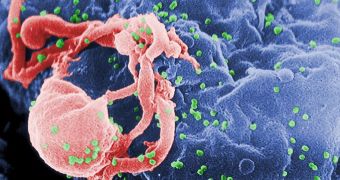A collaboration of researchers in the United States has been recently awarded a grant to investigate the most important traits that the human immune system exhibits at the onset of HIV infection.
The human immunodeficiency virus (HIV) is one of the deadliest pathogens on the face of the planet, responsible for the deaths of millions of people worldwide each year.
It is the source of AIDS (acquired immunodeficiency syndrome), an unforgiving disease for which there is currently no cure. For millions, contracting the disease equals a death sentence.
This is especially true in the developing world, where limited access to drugs and healthcare personnel, alongside other motives, prevents the general population from getting rid of the virus and the disease.
But, even if HIV appears to destroy the human body's natural defenses, researchers say that a immune system response of sorts exists when the pathogen first invades.
This early innate immune response to HIV infection is the main target of the new investigation.
Salk Institute for Biological Studies professor John Young, PhD, and Sanford-Burnham Medical Research Institute associate professor Sumit Chanda, PhD are the leaders of the multi-institutional team in charge of carrying out the research.
Their work is sponsored with a $21 million Program Project Grant.
“More traditional approaches have relied upon investigating the roles played by single genes or individual cellular pathways. While these studies have borne some fruit, they only uncover small pieces of a highly interconnected network,” Young explains.
He is the director of the Nomis Foundation Laboratories for Immunobiology and Microbial Pathogenesis at the Salk Institute.
“The team working on this grant wants to understand how the innate immune system functions as a whole, with the goal of building accurate mathematical and experimental models that can ultimately be used to inform vaccine design and used to predict which cellular factors represent new targets for antiviral therapies,” he adds.
“The project may also reveal why some individuals differ in their susceptibility to HIV infection,” Young believes.
“The events that occur immediately after exposure to HIV, which determines the ability of the virus to establish infection and ultimately shape the course of the disease, are very poorly understood,” Sumit Chanda concludes.

 14 DAY TRIAL //
14 DAY TRIAL //